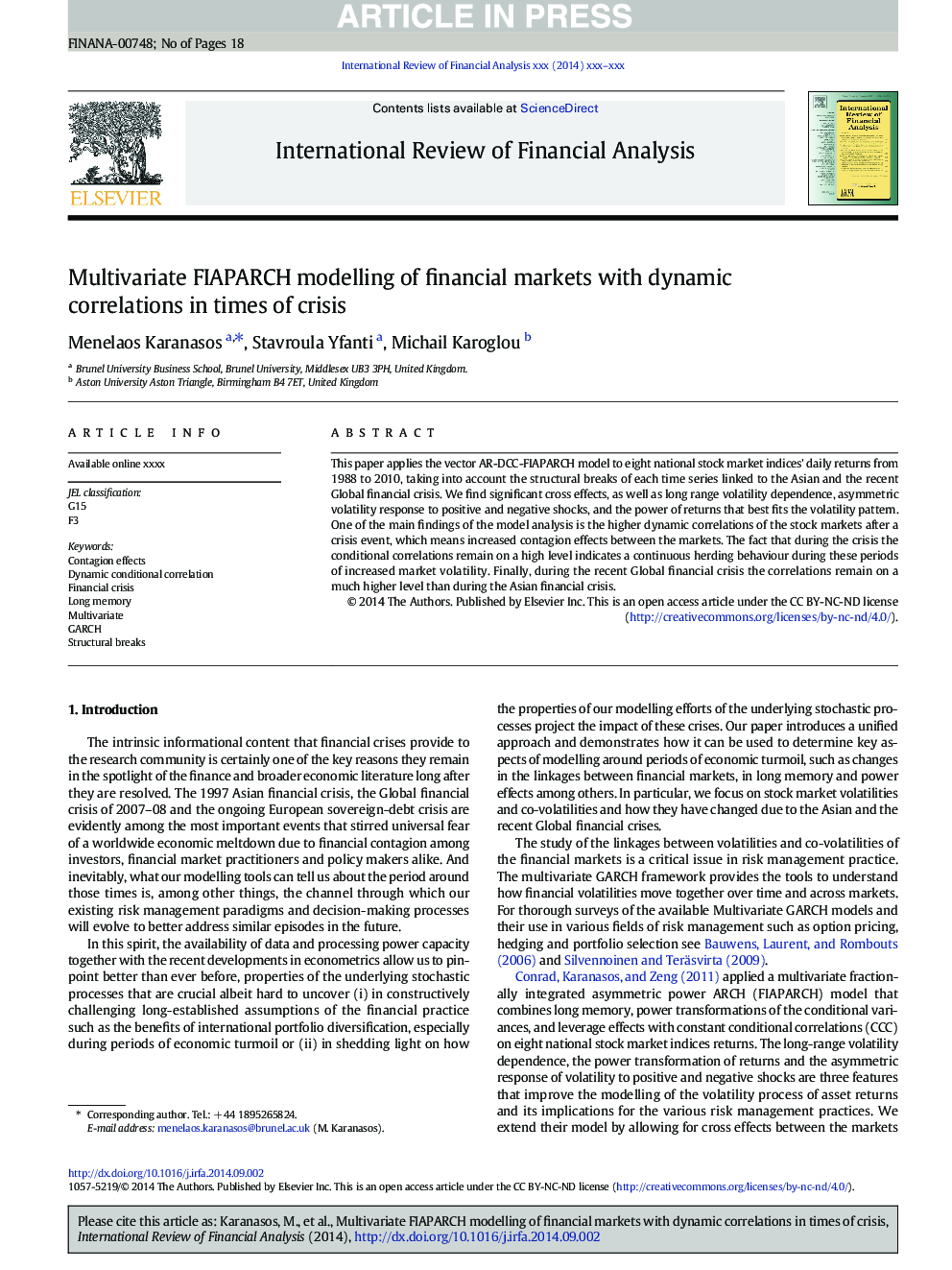| Article ID | Journal | Published Year | Pages | File Type |
|---|---|---|---|---|
| 5084491 | International Review of Financial Analysis | 2016 | 18 Pages |
Abstract
This paper applies the vector AR-DCC-FIAPARCH model to eight national stock market indices' daily returns from 1988 to 2010, taking into account the structural breaks of each time series linked to the Asian and the recent Global financial crisis. We find significant cross effects, as well as long range volatility dependence, asymmetric volatility response to positive and negative shocks, and the power of returns that best fits the volatility pattern. One of the main findings of the model analysis is the higher dynamic correlations of the stock markets after a crisis event, which means increased contagion effects between the markets. The fact that during the crisis the conditional correlations remain on a high level indicates a continuous herding behaviour during these periods of increased market volatility. Finally, during the recent Global financial crisis the correlations remain on a much higher level than during the Asian financial crisis.
Keywords
Related Topics
Social Sciences and Humanities
Economics, Econometrics and Finance
Economics and Econometrics
Authors
Menelaos Karanasos, Stavroula Yfanti, Michail Karoglou,
